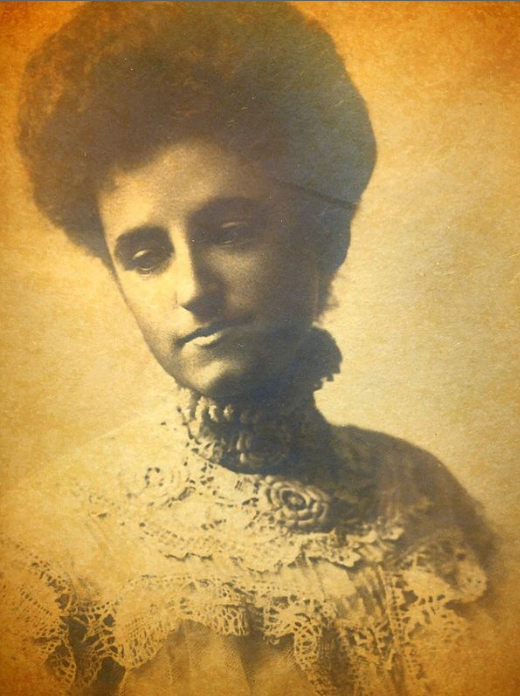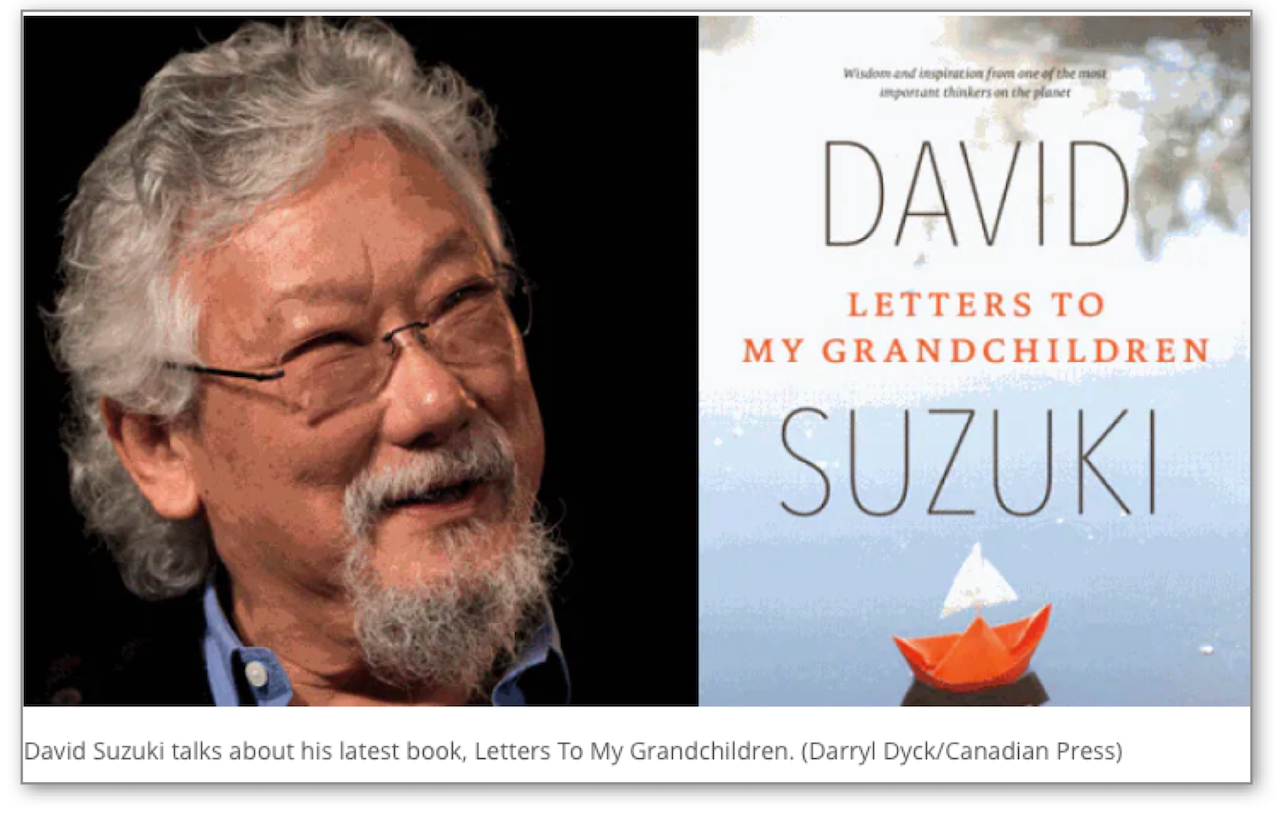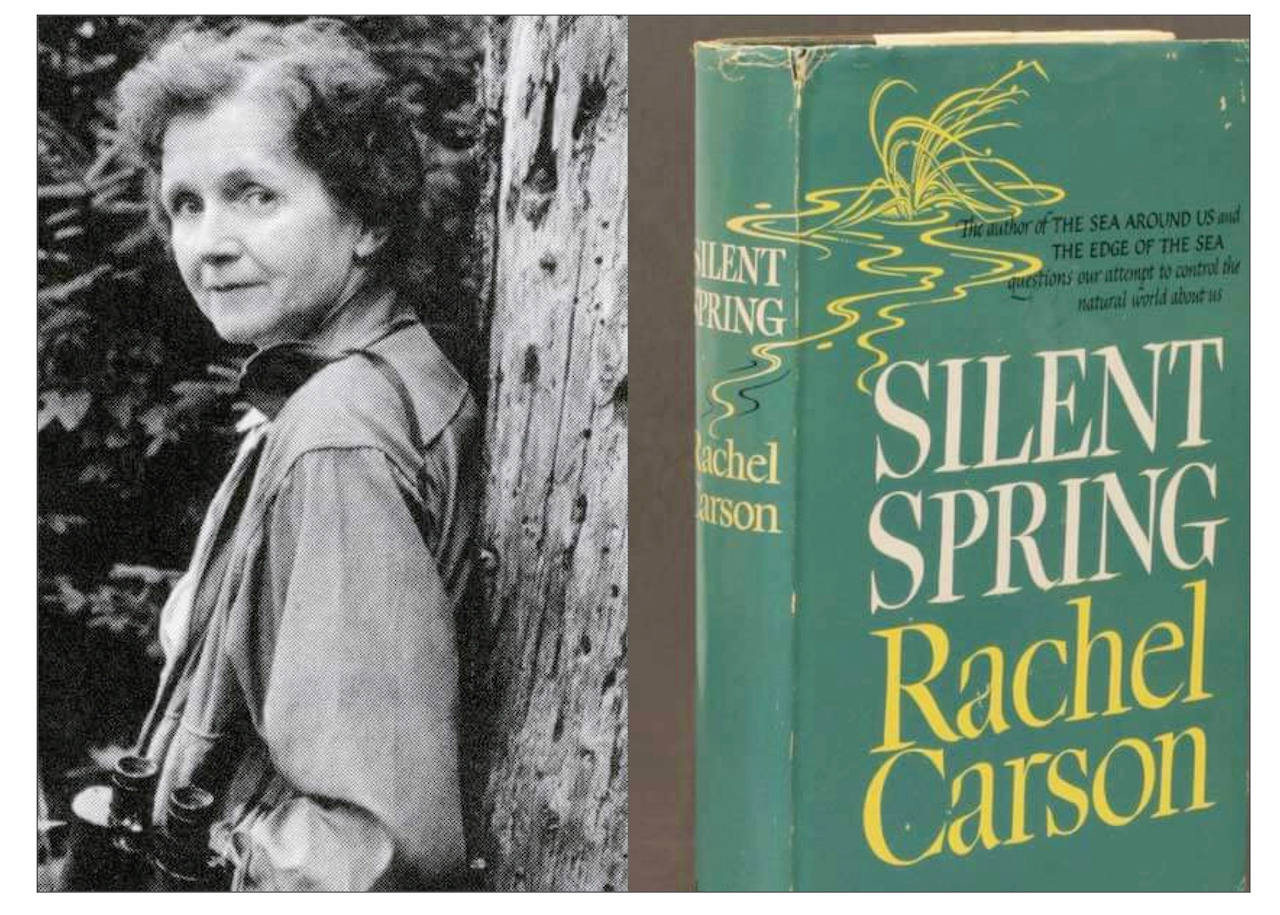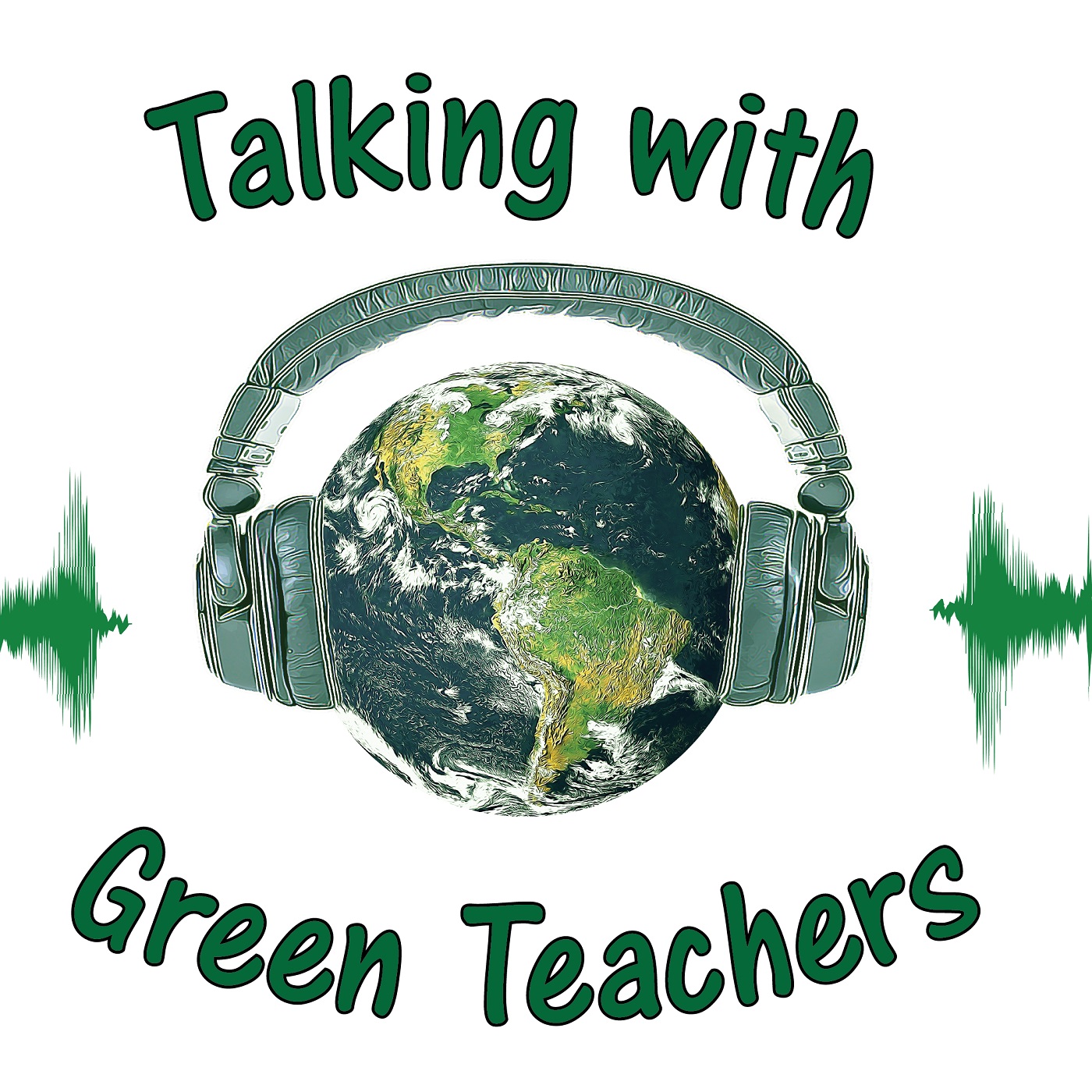Educating Earth–Connected Kids

By Kerry Crofton
The greatest gift we can give youth today is a love of nature and to get them off small screens and into the big outdoors as often as we can. Here’s an inspiration for us “Green teachers”: Environmental educators Jane Goodall, Richard Louv, David Suzuki and the pioneering Rachel Carson each had a parent, grandparent, or teacher who nurtured this love of the natural world. That early influence fuelled their life-long dedication to caring for the Earth and all her inhabitants. With your guidance, your Earth-connected students can follow in their footsteps and bring much-needed leadership as stewards of our at-risk planet.
As you read the stories that follow, my hope is that you’ll see that the long-standing wisdom and messages from Dr. Goodall and other leaders are more relevant than ever, and that you will take pride in the work you do. In these tech-focused times, connecting children with nature is more crucial than ever for their healthy development. As Richard Louv reminds us, “The more high-tech our lives become, the more nature we need.”
Dr. Jane Goodall’s wisdom
Are your days jammed with seemingly endless activity? In your classroom? Your own home? Sometimes it seems as though we are so caught up in getting through the day and trying to sleep through the night that it’s hard to slow down and take a breath. Let’s pause. Step back. Reflect.
Let’s appreciate the work we are doing. Each child we inspire is one more potential steward of the Earth. As you know, youth today need resilience, adaptability, the know-how for living sustainably, the ability to make true connections — face-to-face, not on a screen — and the path to solace and renewal in nature.
I’m not going to list here all the heart-breaking tragedies of the fires and floods brought on by global warming and the senseless conflicts engulfing our entire planet; you only have to glimpse at the news to feel overwhelmed by all of that. Last year we did a webinar series (Care for the Earth’s Caregivers) with Green Teacher and Take Me Outside. Dealing with eco-anxiety was one of the topics. Honestly, it seems in these troubled times that anyone not suffering from some level of eco angst is not paying attention. It is clear that we need to dig deeper, to strengthen the ways we recharge. To keep going, we need to keep hopeful. This vital life lesson is the core message of Dr. Jane Goodall.
She walks slowly onto the stage of the packed audience hall, dressed simply with a green shawl draped across her slender shoulders, her grey hair tied back. Dr. Goodall greets everyone with a soft smile. As you can imagine, she is greeted with rousing applause. Without notes, Dr. Goodall shares her story. And what a story it is! Even though most of us fortunate enough to secure a seat know about her and her life’s work, it is still enthralling to hear her speak in person.
With her gentle voice and unassuming presence, Dr. Goodall conveys such power, such heart. She tells us that her main job now is to give people hope, to urge them on. And she does. Honoured as UN Messenger of Peace and an inspiration to many of us working in environmental education and to youth everywhere, she is also a much-treasured messenger of hope.
Here are the Four Reasons for Hope that Dr. Goodall shared with us:
The Amazing Human Intellect
The Resilience of Nature
The Power of Young People
The Indomitable Human Spirit
Everyone in the audience that evening was surely inspired, as was I, to keep doing what we can each day to make this world a better place — to keep teaching children of all ages to put down their small screens and truly connect with the natural world.
Maybe the young child we nurture today will pay forward such benefits in the future. This is an integral part of Dr Goodall’s lifelong dedication. She spoke of the gratitude she feels for her mother and the way she instilled — at an early age — a love of nature and all animals:
“When I was a child and loving animals, my mother supported my love. She didn’t get mad when I took earthworms in dirt into to my bed to study them. She didn’t scold me when I scared the entire family by disappearing for four hours. I’d been hiding in the henhouse to see where the egg came out of the hen because I couldn’t work it out. My mother got books about animals. And then I met Dr. Doolittle and Tarzan in books, and decided I would grow up and go to Africa and write books about them. That’s when I was 10. Everybody laughed at me, but she said, ‘If you really want this, you’re going to have to work really hard, take advantage of opportunities, and don’t give up.’ ”
Dr. Goodall often quotes her mother’s advice: “If you really want something, and really work hard, and take advantage of opportunities, and never give up, you will find a way. What you do makes a difference, and you have to decide what kind of difference you want to make.”
Dr. Goodall also reminds us that we have much to learn from Indigenous cultures, “Indigenous people have been very wise custodians, guardians of the land for hundreds and hundreds of years. They had this wisdom of making decisions based on how they will affect our children, and their children. They did not destroy their environment. They lived in harmony with it. Finally, we are beginning to listen to Indigenous voices and learn from them how to treat the land better. My mission is to create a world where we can live in harmony with nature.”
That night Dr. Goodall was welcomed in a traditional ceremony by Indigenous Elder Ann LaBillois. With her drum, Elder Ann sang the Honouring Song. Backstage these two kindred spirits chatted like sisters. Dr. Goodall said that the slow and steady beat of the drum felt like Mother Earth to her.
Elder Ann has also talked about the important role her grandmother played in her life and how she taught all of her children and grandchildren to respect each other and Mother Earth. Here is a picture of us taken that night.
Kerry Crofton is with Dr. Jane Goodall, UN Messenger of Peace, and Elder Ann LaBillois, Elder in Residence, Dalhousie University. Elder Ann offered the opening prayer and honouring song. Dr. Goodall is holding our gift of a traditional Mi’kmaq pendant. May we be inspired by Dr. Goodall’s message of hope and her international program for youth: Roots & Shoots. The best way I know how to repay Dr. Goodall’s kindness is to keep going with our work. Each day, let’s choose positive actions in our own lives and continue to connect children and their families with each other and the natural world.
Dr. Goodall kindly wrote this for the jacket of our book: “Today children (and many adults) are spending more and more time on their cell phones, and so on. This is a very worrying trend. Kerry Crofton’s Less Screen, More Green describes the importance of spending time outside… and a love of the natural world that is so desperately important.”
As environmental educators, as Green Teachers, I know we often feel fatigued and overwhelmed, and in many classrooms it’s difficult to balance the tech-dominant influences of this digital age with the nature time we know is vital for the healthy development of our students. I hope you are also inspired by Dr. Goodall’s message. She once said to me, “You are doing good work. Keep going.”
 Stories from Richard Louv and Dr. David Suzuki
Stories from Richard Louv and Dr. David Suzuki
Another prominent environmental educator, Richard Louv, sent us an encouraging note for all Green Teachers. Richard Louv is the founder of the Children & Nature Network and author of Last Child in The Woods. He also writes about his grandmother’s powerful early influence, providing lifelong inspiration:
“My grandmother knew things. So many of us, in later generations, have little of her day-to-day knowledge of the world. She raised her own vegetables, canned apples and peaches and persimmons from her own land, knew the names of all the flowers and their seeds and bulbs, and other plants on her acre in Independence, Mo., knew when they bloomed in the spring and died in the fall. She knew all that — the fibrous act of life — partly out of necessity, for survival in the Great Depression, but not only from those hard times. And not only for survival. The knowledge was carried long before by self-reliant and self-sustainable generations in which just about everyone had a relative or friend who lived on a farm. All that heritage, or most of it, is gone.”
Louv adds a special message for Green Teacher magazine: “A new heritage can be born, through the international movement to connect children, families, schools, and whole communities to the natural world. Green Teacher and its readers are essential to that movement, and to shaping a life of fullness for future generations.”
Dr. David Suzuki, the Canadian scientist, environmental activist, and author, has dedicated his life to educating the public and also to encouraging his children and grandchildren.
Dr. Suzuki writes, “Why do you need to go outside? For one thing, to appreciate what it is that keeps you alive. And the more time you spend outside, the more you are able to sense change in that world. If you can smell something, chances are that unless it’s flowers or food, it doesn’t belong there and is not good for us. But even more profound, we have to get outside and seek nature because we need that connection for our physical and mental health.” – Letters to My Grandchildren

Recalling Rachel Carson’s words

Let us never forget the pioneering biologist Rachel Carson and author of Silent Spring.
Often called “the
mother of the environmental movement,” she wrote that her passion for the environment was instilled at an early age by her mother. That green legacy left a lasting impact on so many of her generation and on those of us trying to follow in her footprints, as best we can.
Carson reminded us about the importance of children learning to be curious and think green, “The more clearly we can focus our attention on the wonders and realities of the universe, the less taste we shall have for destruction. Each child should be given a sense of wonder so indestructible that it lasts throughout life. If this child is to keep alive an inborn sense of wonder, he or she needs the companionship of at least one caring adult who can share it.”
Hands in the mud (literally)
I’m happy to say our young grandchildren are at low-tech schools, love roaring around outside, and would choose spending time at the shore over an indoor video game any day.
Yes, I know, as they get older this becomes more challenging. All we can do is instill in them a close connection with wildlife, plants, and other trees; get them outside each day; and avoid digital media as much as we can.
As children, my brothers and I had the good fortune of parents who brought us up on Beatrix Potter books and lots of time outdoors splashing in mud puddles. They loved gardening and encouraged us to dig our hands into the dirt. We made our own little patches in the garden, carefully bordered with green twine. What fun it was making labels on wooden sticks for the rows of vegetables, watching green sprouts emerge from the ground, and munching on the first little carrots. I remember my dear mother’s tender care of a bird who fell from its nest. Together we fed it from an eye dropper and rejoiced as it grew and flew away. As with most of the children of our era, we were outside much of the day — climbing trees, making up games, fashioning things with sticks. We had to be called in when it got too dark. TV time was limited — no video games, or electronic gadgets to consume us back then.
We also learned to respect and explore the natural world during our several years at a wonderful Montessori school by the sea. (Our British-born headmistress had trained with Dr. Maria Montessori.) My specialty in the school’s mud kitchen, that we created in the intertidal zone, was seaweed “hamburgers,” “cooked” on the rocks, seasoned with sand, garnished with twigs, and served on white clam shells. Yum! Unstructured play at its best.
Finding the balance
My husband and I have made a conscious effort to encourage our children to limit their screentime, use safer wired connectivity when they can, and turn off all WIFI at night. Neither our parents nor our teachers faced the challenges of using the benefits of technology and trying to reduce the risks and find balance. It was an analog world.
I hear from teachers concerned about the change they have seen in their students over the years: “More and more, we now have to take children by the hand and encourage them to dig their hands in the dirt; coach them into the unstructured play that is so key for their early childhood development. Sadly, many of them are not getting this from their parents, or grandparents as so many of us did when we were young. Many of the parents also spend way too much time on digital media. No wonder the kids are also hooked.”
This is from a middle-school teacher: “At the beginning of each class, I ask my students to put their devices in the tray that’s on my desk. If anyone refuses this is handled as noncompliance: the student goes to the principal’s office and a parent may become involved. This policy has enhanced their ability to concentrate, learn, and interact more openly with each other. This is well worth the hassle of dealing with the pushback from some of the more tech-focused parents. I have included a daily outdoor activity in our science curriculum. Even in bad weather the kids benefit from some physical activity in nature.”
Yes, there are many benefits to technology, but too much tech time comes with problems. You may be aware of this research and see some of the following symptoms in your students:
- Sedentariness
- Childhood obesity
- Digital addiction
- Diminished attention spans
- Decrease in literacy
- Cyber bullying
- Posture problems
- Increase in near-sightedness
- Sleep disruption
- Isolation
- Depression and anxiety
- Nature-deficit disorder
Our School Tech Plan addresses the findings of this research and offers science-based strategies for establishing a healthier screentime/greentime balance in this digital age. As you seek this balance, here are some considerations to get you started:
- First, reflect on what you want for the students. How tech-savvy do they need to be at this age? How much nature time do they need?
- How much do they need to balance digital expertise with developing analog skills such as mindfulness, enjoying outdoor play, loving the natural world and all her creatures, cursive writing, creativity, imagination, being kind and empathetic, and getting along well with others?
- Then, envision your school’s tech guidelines so they’re in line with these values and goals.
- Next is the discussion — getting all parties on board. This may involve the administration, school board/district, or Dept. of Education at the policy level. Teachers, parents, and older students should be included whenever possible. Administrators, teachers, parents, and students need to know about the evidence of harm of excessive screentime as well as tech and social media addiction.
If you are also concerned about students spending too much time inside in front of screens as well as losing their ability to settle, process information, focus, and stay on task, you might consider the following Best Screentime Practices:
- Make good use of your tech time for work, leisure, and communication; then unplug when just scrolling mindlessly. Know the science and symptoms of tech dependency/addiction and how to recognize where you are on that spectrum.
- Make a mindfulness practice part of each day. Awareness is key to waking up when you’re turning to screens as a distraction; a way to deal with boredom, restlessness, anxiety, or depression; or a way to distract yourself. Mindfulness is an essential skill for finding freedom.
- Learn healthier ergonomics — the set up of your workstation and screentime practices –— to reduce strain on your eyes, hands and wrists, muscles, brain, and attention span.
- Consider analog options: write on paper with pen or pencil; use a battery alarm clock instead of your mobile phone; get rid of digital cordless phones and invest in a corded landline.
- Put mobile devices on airplane mode whenever possible; never hold a mobile phone against your head; use a wired earpiece (not wireless ear buds); use a wired mouse and keyboard; be wary of “smart” gadgets or appliances — all emit wireless radiation at harmful levels.
- Switch wireless internet to wired — a more secure and safer connection. At least power off all WIFI and devices at night to ease insomnia and enhance immune-restoring sleep.
- Unplug and get outdoors at least 20 minutes each day — the best digital detox. Time in nature can reduce tech dependency, stress, anxiety, and depression, and boost mood and energy levels.
Here is another suggestion that may already be part of your outdoor education program. The “sit spot” practice is a nature-based mindfulness activity that brings great benefits to students, and teachers. Much like the approach of Montessori and Steiner/Waldorf schools, this practice nurtures children’s ability to tune into their senses and learn to slow down and self-soothe. Yes, without screens.

Our work as Green Teachers is more important than ever. We have seen how learning to love nature at an early age had a lasting, and profound, impact on some of the world’s leading environmentalists. Thank you for nurturing your students in this way.
Kerry Crofton is founder and director of the Canadian charity, Global Alliance for Brain & Heart Health (dba Global Health Alliance). Her international team of environmental health experts are dedicated to nurturing the physical and mental well-being of children, youth ,and families in this digital age. She is a nature-loving mother and grandmother and once worked as a teacher. These days she offers Pro D Less Screen, More Green programs for other teachers, as well as The Mindful Tech Plan™, The Family Tech Plan™, and The School Tech Plan™. Kerry is the author of The Wellness Guide for the Digital Age as well as Less Screen More Green: The Mindful Tech Plan offers the powers of nature, mindfulness and being truly connected.

Hear more from Kerry Crofton in our Talking with Green Teachers podcast, Episode 51: Balancing screen time and green time.
Resources:
Green Teacher magazine articles: Summer 2022, Fall 2022, and our four-part webinar series Care for Our Earth’s Caregivers. Green Teacher Magazine
Our websites:
Richard Louv is working on a new book. You can find out about his wonderful books at www.richardlouv.com and learn about the inspiring activities of The Children & Nature Network: www.childrenandnature.org
Leave a Reply
You must be logged in to post a comment.







